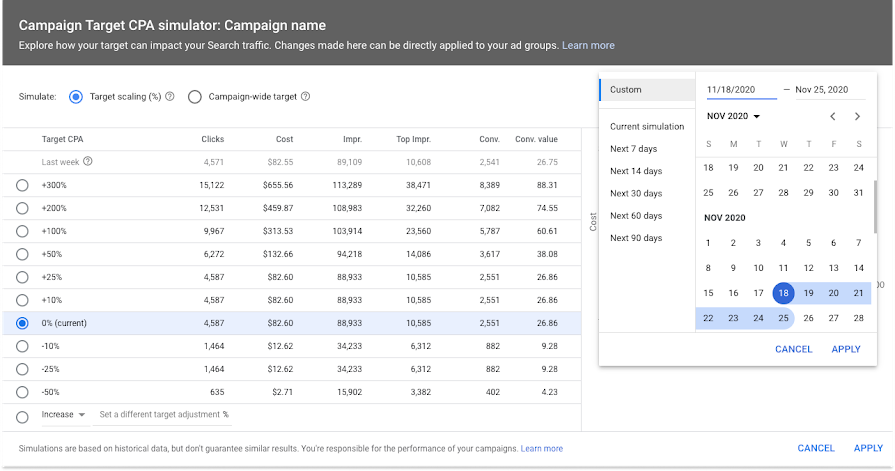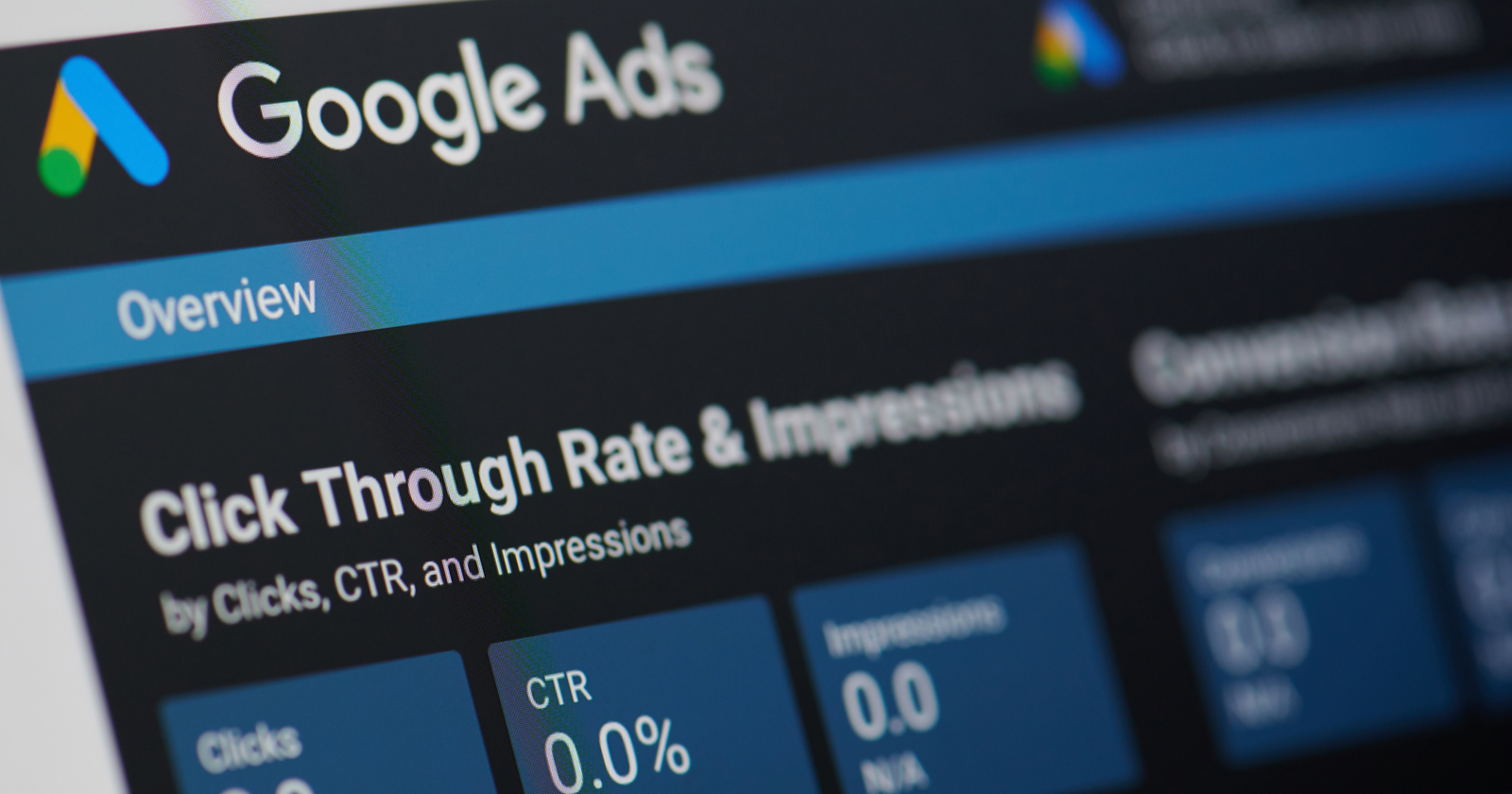Google has announced enhancements to their Smart Bidding algorithm, focused on more reporting insights and predictive features. The announcement comes on the heels of a blog post the day before encouraging advertisers to use Smart Bidding with Broad Match.
Smart Bidding consists of several automated bid strategies that allow Google to manage bidding in real-time, based on account data and account goals. These bidding types include:
- Target CPA
- Target ROAS
- Maximize Conversions
- Maximize Conversion Value
- Enhanced CPC
Smart Bidding options can be selected and applied at the Campaign level.
Predictive Data for Budgets, Target CPA and Target ROAS
Up until now, predictive data was based on the past 7 days of data which would show what would have happened in the past. Smart Bidding has now been upgraded with the ability to forecast up to 90 days out, accounting for upcoming influencers like seasonality.
Predictive data can be seen for campaigns using Smart Bidding by clicking on the little graph symbol that appears next to the budget setting:

Below is an example simulation that shows predicted differences for a future 7-day period based on different levels of Target CPA scaling.
The columns show predicted clicks, costs, impressions, top impressions, conversions, and their value. Choosing different dates updates the predictions in those columns.

Enhanced Bid Strategy Reports
Advertisers can now also see recommendations to improve their Smart Bidding results for things like keywords and budgets. Google notes there will be future expansion of these recommendations into other factors.
The Bid Strategy report also will now share its metrics in four other places throughout a Google Ads account:
- In the Campaign tab: Users can now see average target CPA and ROAS in this tab for Search and Shopping. (App will soon be available.) This will give easy-access insight to how Google Ads is optimizing their buy with factors like device bids, CPA and ROAS targets, and changes to them over time.
- Also in the Campaign tab: In Search campaigns, users can potentially get better insight into their conversion delay and how it may impact their final results. Hovering over the conversions column will reflect the number of days left for conversions to be reported based on a defined time period. It will also show an estimate of the number of conversions expected, but only if a campaign has enough historic conversion data to calculate it.
- In the Overview page: For search campaigns, top signals will now appear for maximize conversion and Target CPA bid strategies. This will help users identify what factors Smart Bidding is focusing on for performance.
- In the Shared library: Advertisers can now edit portfolio bid strategies attributes directly in the Shared library, such as names and targets for CPA, ROAS, and Impression Share.
Many advertisers would like to applaud Smart Bidding, but are uncomfortable with how the optimization can be somewhat of a black box. When results change, advertisers can feel helpless to fix or scale, because they aren’t sure what’s triggering the change. The continued transparency into how Smart Bidding is interpreting data for its use is no doubt a welcome source of data for ad managers.
The full announcement from Google can be found here.





